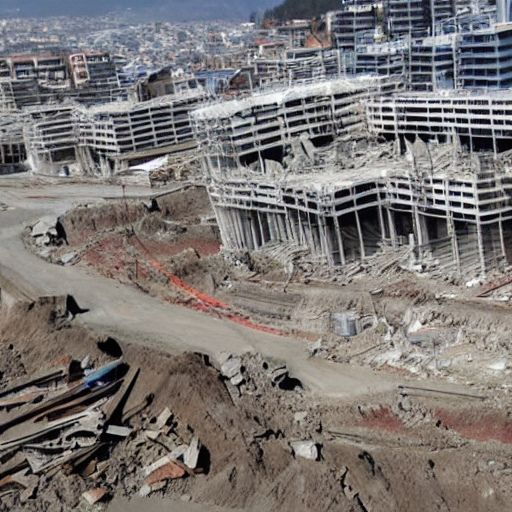Introduction:
Building Resilience: The geographical location of a property plays a pivotal role in determining the construction standards it must adhere to. One of the critical considerations is the seismic risk of the region. This article delves into the question: Are houses required to be built stronger in areas prone to earthquakes than less likely areas, such as California versus Florida?

Understanding Seismic Risk:
California’s Seismic Landscape: California, with its proximity to multiple fault lines, is a seismic hotspot. Earthquakes are a prevalent and significant geological risk in the state. As a response to this heightened risk, stringent building codes are in place to ensure that structures can withstand the lateral forces generated by seismic activity.
Florida’s Low-Seismic Risk: In contrast, Florida experiences a lower risk of seismic activity. However, the state faces other natural hazards, particularly hurricanes and strong winds. Building codes in Florida emphasize resilience against wind forces rather than seismic forces.
Construction Standards in Earthquake-Prone Areas:
Stricter Building Codes: Regions prone to earthquakes, like California, implement strict building codes that mandate earthquake-resistant construction. These codes dictate specific design and engineering practices to enhance a building’s ability to withstand the ground motion and lateral forces during an earthquake.
Structural Design for Seismic Resilience: Engineers in earthquake-prone areas design structures with features that enhance seismic resilience. This includes reinforced foundations, flexible building materials, and designs that allow structures to absorb and dissipate seismic energy, reducing the risk of damage.
Construction Practices in Low-Seismic Risk Areas:
Focus on Hurricane Resistance: In states with lower seismic risk, such as Florida, building codes prioritize construction practices that withstand hurricanes and strong winds. This includes materials and designs that can resist the lateral forces associated with powerful storms.
Adaptation to Local Hazards: Local building standards are adapted to the specific natural hazards prevalent in the region. In Florida, for instance, the emphasis on wind resistance aligns with the state’s susceptibility to hurricanes.

Conclusion:
In conclusion, the construction standards for houses are indeed influenced by the seismic risk of the region. Earthquake-prone areas like California implement strict codes to ensure structural resilience, while regions with lower seismic risk, like Florida, focus on designs that withstand other natural hazards. Tailoring construction practices to local geological risks is essential for building resilient and safe structures that can withstand the unique challenges posed by the environment in which they are situated.
Sameera Building Construction
Your One-Stop Shop for Building Dreams (Literally!)
We've got bricks, we've got beams, and we've got a bunch of hard hats.
Because when it comes to construction, we don't just build buildings; we build stories.
Visit Us Now and Join the Fun!Source link
